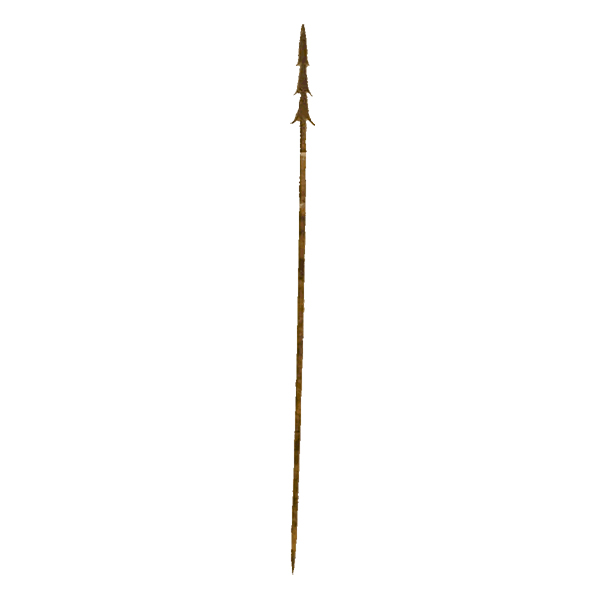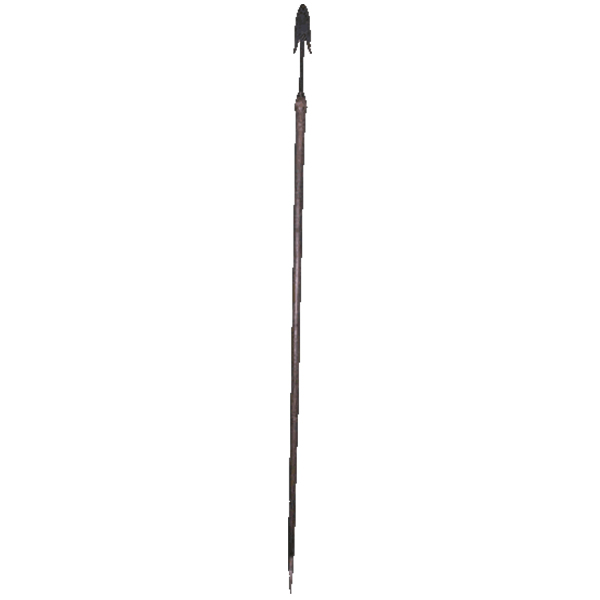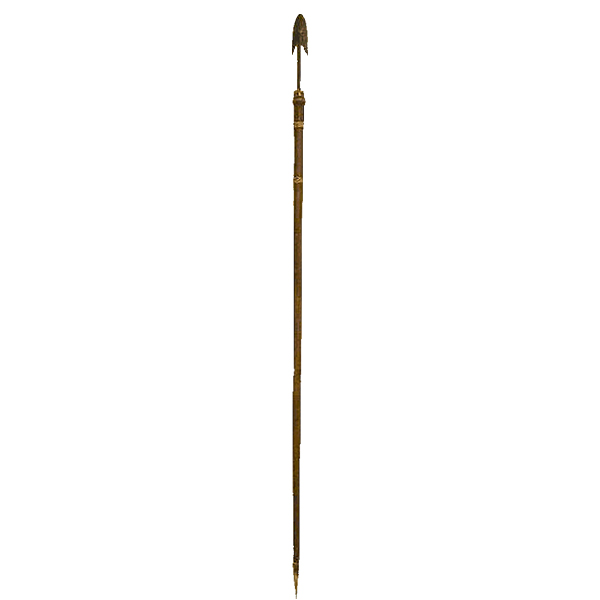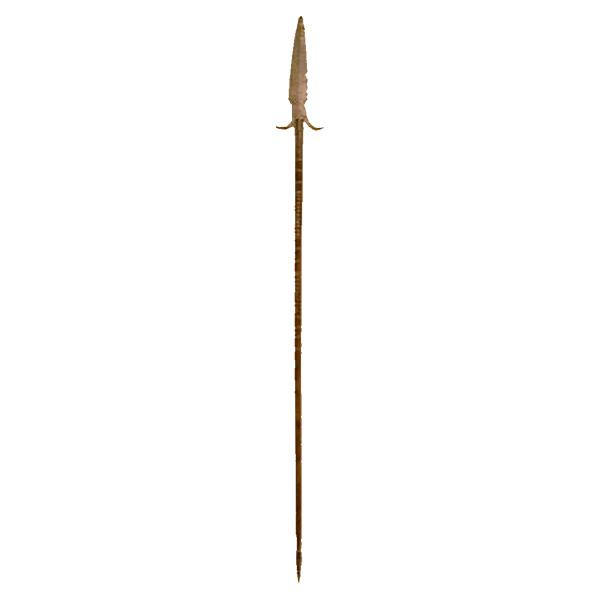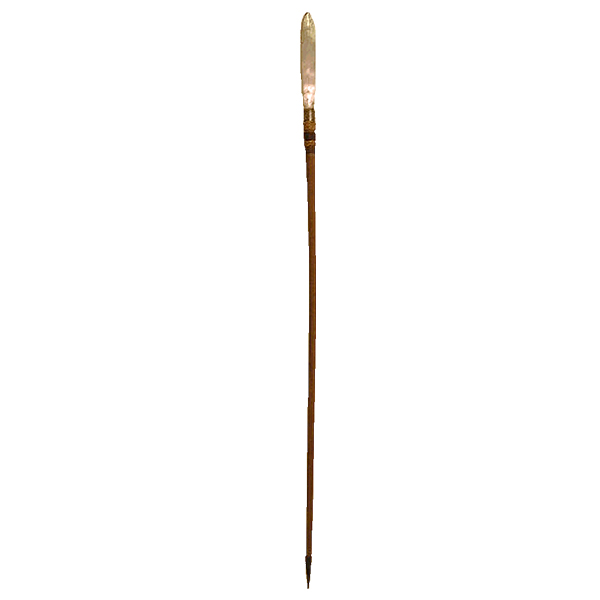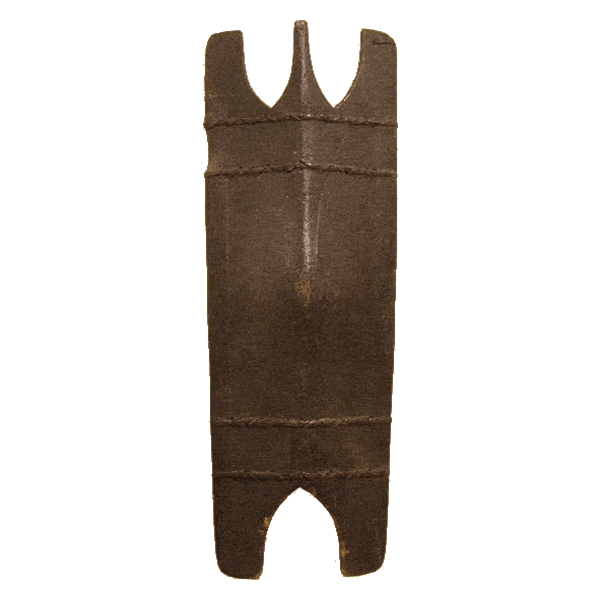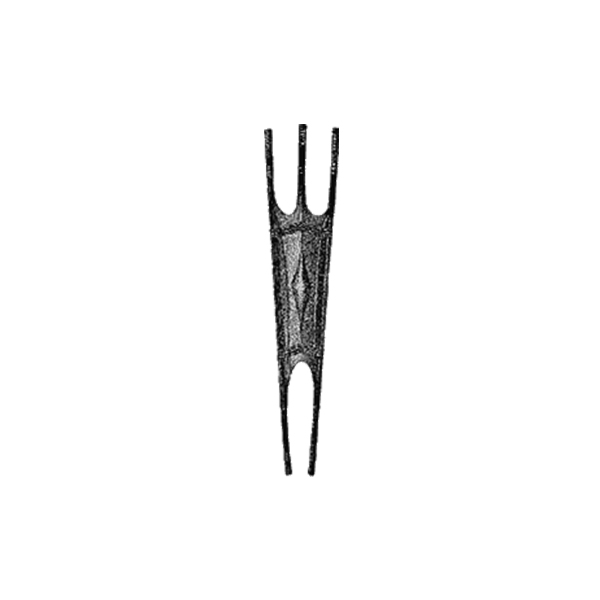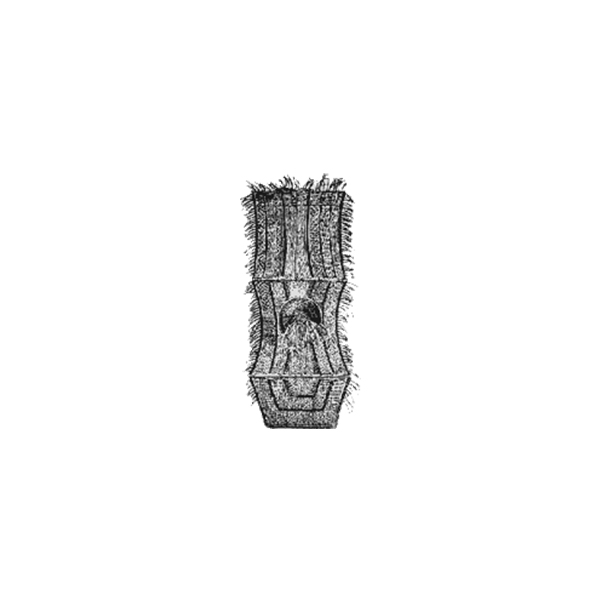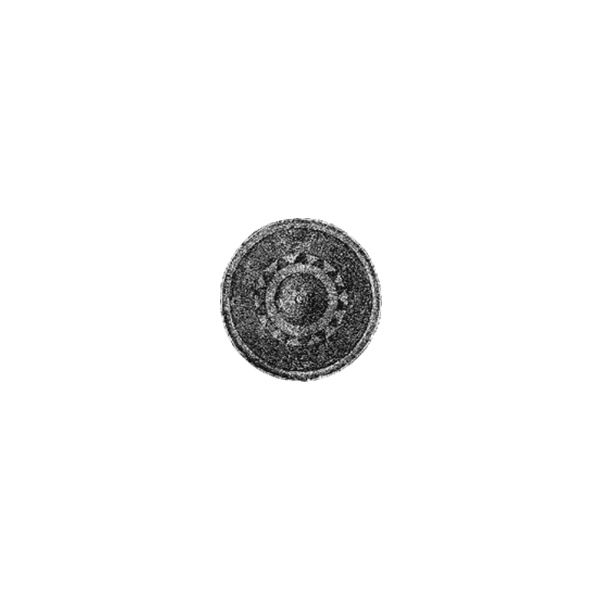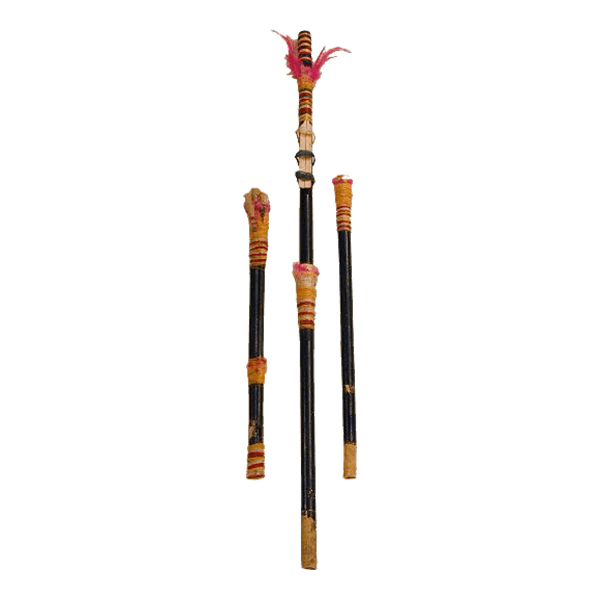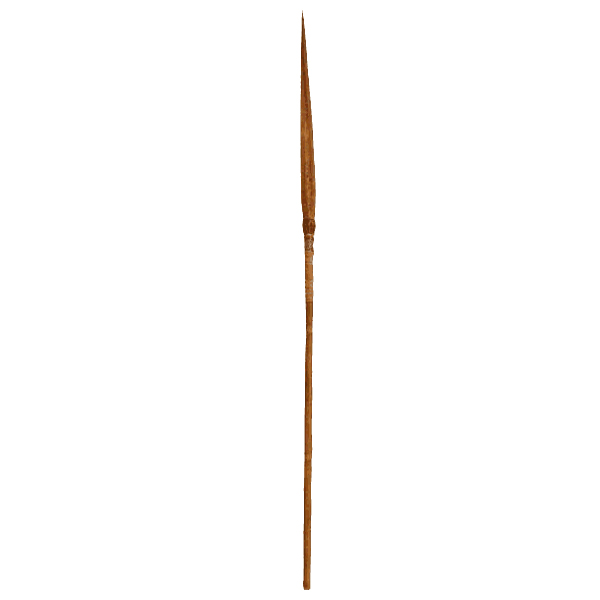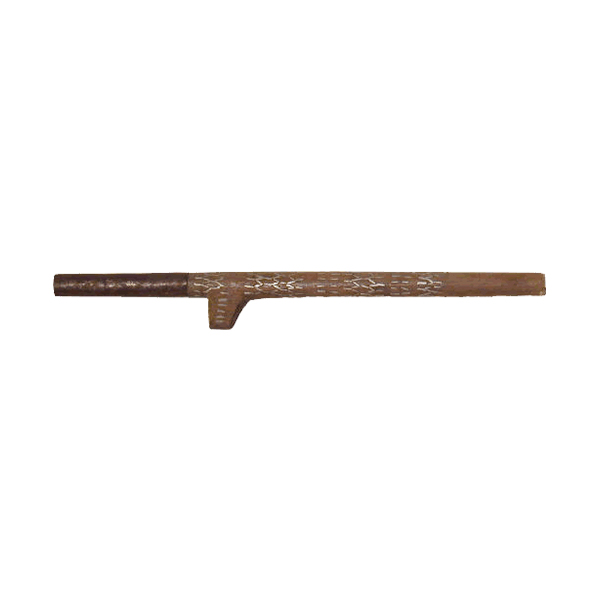Armory
Spears
At far left is the Bontok si-na-la-wi-tan. This barbed wonder is considered a war spear, but it tends to be used more for frightening the anitos, or spirits, who threaten solitary travelers in mountain passes. It is never used to hunt. The second (reduced in size) and third items are examples of the common fal-feg war spear, also occasionally used for hunting. Fourth is the kay-yan, a rarely used war spear mainly coveted for its appearance. The last item, the fong-kao, has a utilitarian blade that is considered most serviceable for hunting.
Weapons such as these are carried by highlanders such as the Ifugao, Bontok, Kalinga, Tinggian, and Ilongot. Blades are made in small village forges.
Spears are made with a sheathed point at the nether end for use as staves in mountain climbing.
Shields
Carved from a single piece of (light) wood, this BONTOK SHIELD is protection against the spear and battle axe. The shield is strengthened by abaca fibers laced through perforations. A handle, hewn from the wood behind the boss, normally accomodates the thumb and three fingers.
In contrast to other weapons, shields are generally not traded commercially; the men of each village make their own. In this way, minor stylistic variants are maintained; for example, while most shields, like that at left, are "finished" with a coat of greasy soot, some apply an ochre finish, or leave the wood natural. In some areas, decorative lines are etched in the face of the shield, and occasionally ochre images of snakes and frogs are applied.
The three varieties of shield used in the Philippines. The 3-pronged top of the Luzon shield is used to trip the opponent; the bottom then pins the neck of the fallen victim to the ground for easy decapitation. The Southern shield is also used by the Ilongot and the Zambal Negritos of Luzon; both types are also in common use in Borneo and the Celebes. The Saracen-style buckler of the Moros was introduced by the Islamic invaders, but while farther west they are made of leather and iron, the Moro carves his of wood.
Blow Guns
These four lengths of bamboo (the two in the center are already assembled) fit together to make a blow gun. This one is catalogued as "Negrito," but blow guns are mainly used by the Batak and Tagbanwa on the island of Palawan, and by the Bagobo and Yakan on Mindanao. At one time they probably had a much wider distribution.
Fishing Spear
This is probably a fishing spear, although it also resembles the wooden-tipped arrow of the Manobo.
Bow
The bow is generally known as a Negrito weapon, but it is used by many other people as well, including the Tinggians, Ilongot, and most of the people of Mindanao. It is especially popular among those who live by hunting; agricultural peoples have generally turned to the iron-tipped spear, and then the sword or axe, as their primary weapons in combat, which paradoxically was done at closer range. Bows are made of palma brava wood or bamboo, and rattan is used for a string instead of sinew, rendering it not a very efficient weapon.
That "all's fair in love and war" could have been coined to suit the Filipino, or at least the latter part. Although he possesses a strong sense of justice, once the fight is on rules all but disappear; ambush is the standard mode of attack, and noncombatants, including women, children, and even those who are not enemies but merely close by, seem to be fair game.
